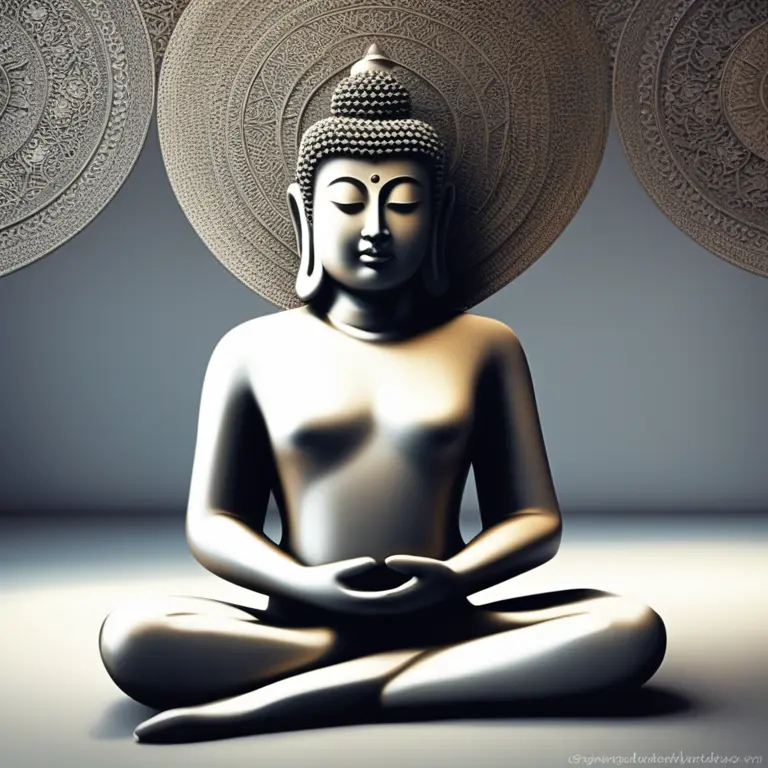
Meditation: Start Your Journey With A Beginner's Guide
Discover simple and effective meditation practices to start your journey towards inner peace and mindfulness.
article by Hina Kurosawa
Starting Your Meditation Journey
Meditation is a practice as old as history, yet it remains ever-relevant in the fast-paced modern world. As more individuals seek balance amidst the chaos, meditation offers a refuge of calm and clarity. For beginners, the thought of sitting in silence may seem intimidating, but worry not – this guide will walk you through the basics. Begin by setting aside a few minutes each day, find a quiet space where you won't be disturbed, and wear comfortable clothing. Embrace patience; meditation is a skill that improves with practice, not an instant fix.

Understanding the Breath
The breath is a cornerstone of many meditation practices. It's constant, always available, and acts as an anchor to the present moment. Start by simply observing your natural breathing pattern. Feel the air flowing through your nostrils, the rise and fall of your abdomen, and the slight pause between inhalation and exhalation. When your mind wanders, gently bring your focus back to your breath. This technique, known as mindfulness of breathing, helps in cultivating concentration and awareness.

Body Scanning for Awareness
Body scanning is another beginner-friendly technique that promotes a deep state of relaxation and body awareness. Lie down or sit comfortably and slowly shift your attention through different parts of your body, starting from the toes and moving upwards. Notice any tension, pain, or discomfort without judgment, simply observing and allowing these sensations to be. This process not only helps in releasing physical tension but also trains the mind to stay attentive and present.

Engaging with Guided Meditation
For those who find it challenging to practice alone, guided meditations are a valuable resource. Reputable mindfulness apps or online platforms offer a variety of guided sessions where an experienced instructor leads you through the meditation. These sessions can cover different themes, from stress reduction to cultivating compassion, and are available in various lengths to fit your schedule. Guided meditations are particularly useful for beginners as they provide direction and structure to your practice.
Incorporating Visualization
Visualization is a technique that involves forming mental images to bring about calmness and focus. Imagine a place that evokes feelings of peace, such as a serene beach or tranquil forest. Engage all your senses—notice the sights, sounds, and smells of your visualization, and allow yourself to bask in this imagined environment. Visualization not only soothes the mind but also prepares it for deeper, more contemplative states of meditation.
Embracing Moving Meditation
Meditation doesn't always mean sitting still. Moving meditations, like walking meditation or gentle yoga, combine mindfulness with physical activity. Choose a peaceful path for a walking meditation, pay attention to the sensation of your feet touching the ground, the rhythm of your steps, and your breath. Similarly, yoga unites the mind and body through deliberate movement and breath control, offering a meditative experience through poses and flows.
Building a Consistent Practice
Consistency is key to reaping the benefits of meditation. Try to meditate at the same time each day to establish a routine. Even five or ten minutes daily can make a significant difference in your mental clarity and stress levels. Don't be disheartened by distractions or days when meditation feels particularly challenging; these obstacles are all part of the journey. Observe your progress and be kind to yourself as your practice evolves.
Published: 1/18/2024
Modified: 1/18/2024
More predictions
Come back here soon to learn more about yourself and your future


Beginner's Guide to Effective Meditation Techniques
Discover the core techniques for successful meditation and enhance your spiritual journey with this beginner-friendly guide.


The World of Meditation: A Peaceful Journey
Delve into the serene world of meditation with this comprehensive guide that illuminates its purpose, practice, and profound benefits.